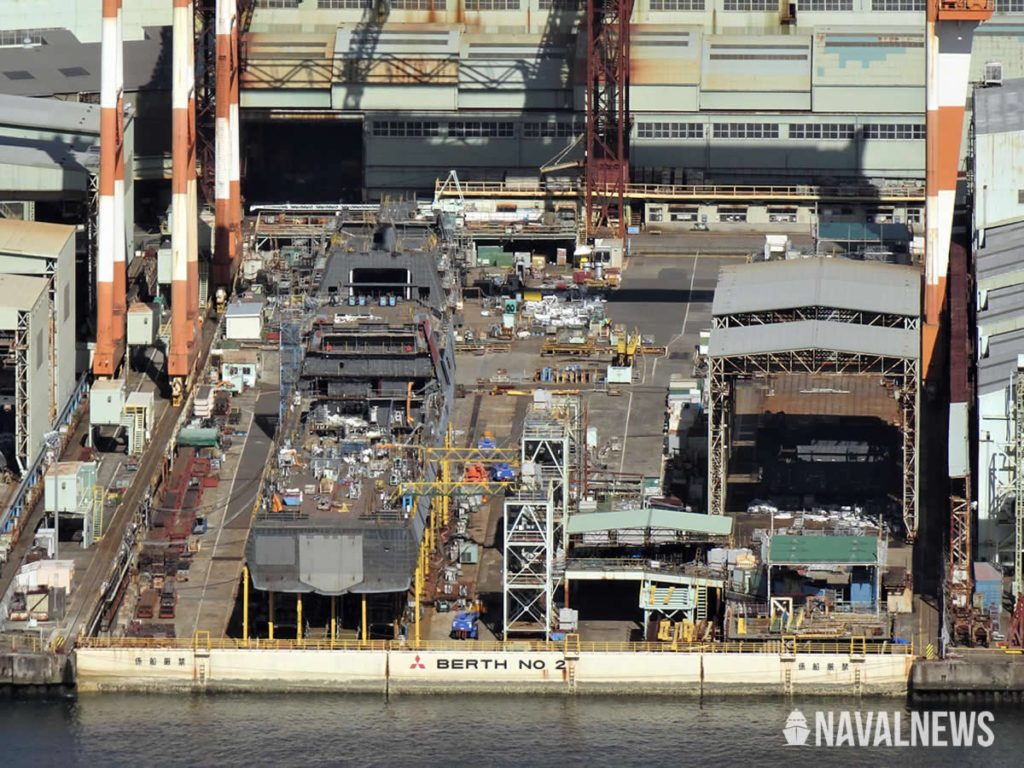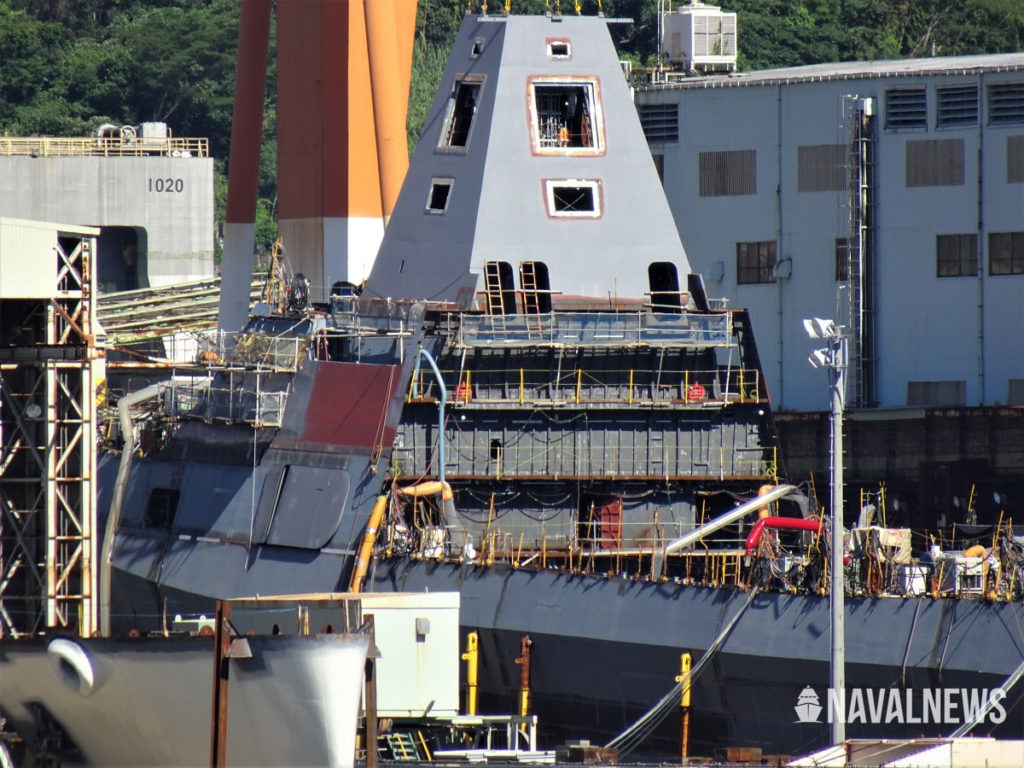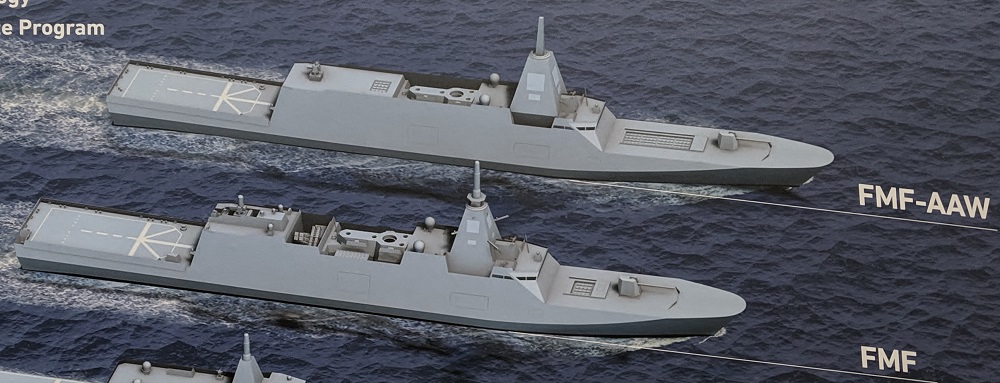Two Future Multi-Mission Frigates (FFM or 30FFM) are starting to take shape at two shipyards in Japan. Images and videos obtained by Naval News from local shipspotters show the integrated mast has been fitted. Both hulls should be ready for launch before the end of the year. Xavier Vavasseur and Yoshihiro Inaba report.
Yoshihiro Inaba contributed to this story
30FFM (also known as FFM and previously known as 30DX) is the next generation multi-mission frigate designed for the Japan Maritime Self-Defense Force (JMSDF). A total number of 22 Frigates are expected to be procured for the JMSDF.
The two shipyards in charge of building the first two frigates of the class are Mitsubishi Heavy Industries (MHI) in Nagasaki and Mitsui E&S in Okayama
The first 30FFM frigate at MHI berth #2 in Nagasaki:
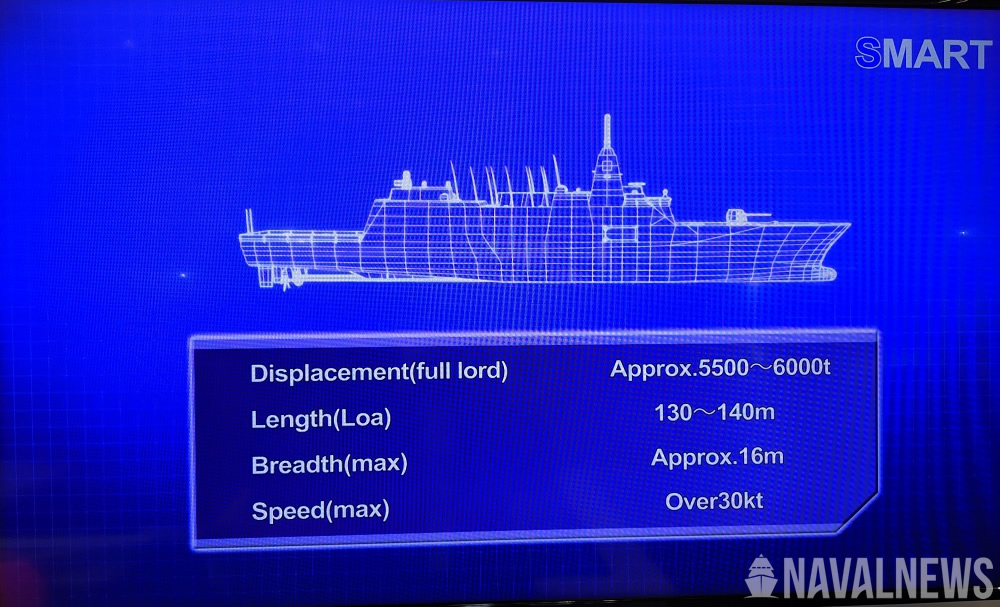
According to MHI, the 30FFM multi-mission frigate will have a full load displacement of about 5,500 tons, with a length of 132.5 meters and a beam of 16.3 meters. It will have a maximum speed in excess of 30 knots. The crew complement will be quite low, at about 90 sailors, indicating a high level of automation on board.
Atsui Yoshioka, Senior Project Manager of the Next Generation Surface Ship Project at MHI previously told Naval News at Sea Air Space 2019 that the main requirements that drove the design of this future ship are:
To achieve such as high speed (over 30 knots), the frigate will be fitted with a CODAG propulsion system consisting in a single Rolls Royce MT-30 gaz turbine and two MAN 12V28/33D diesel engines. Early designs of the frigate showed a combination of waterjet and propellers but the newer scale model (unveiled at SAS 2018 and showcased at various trade shows ever since) doesn’t show the underside of the hull anymore.
30FFM Advanced Integrated CIC
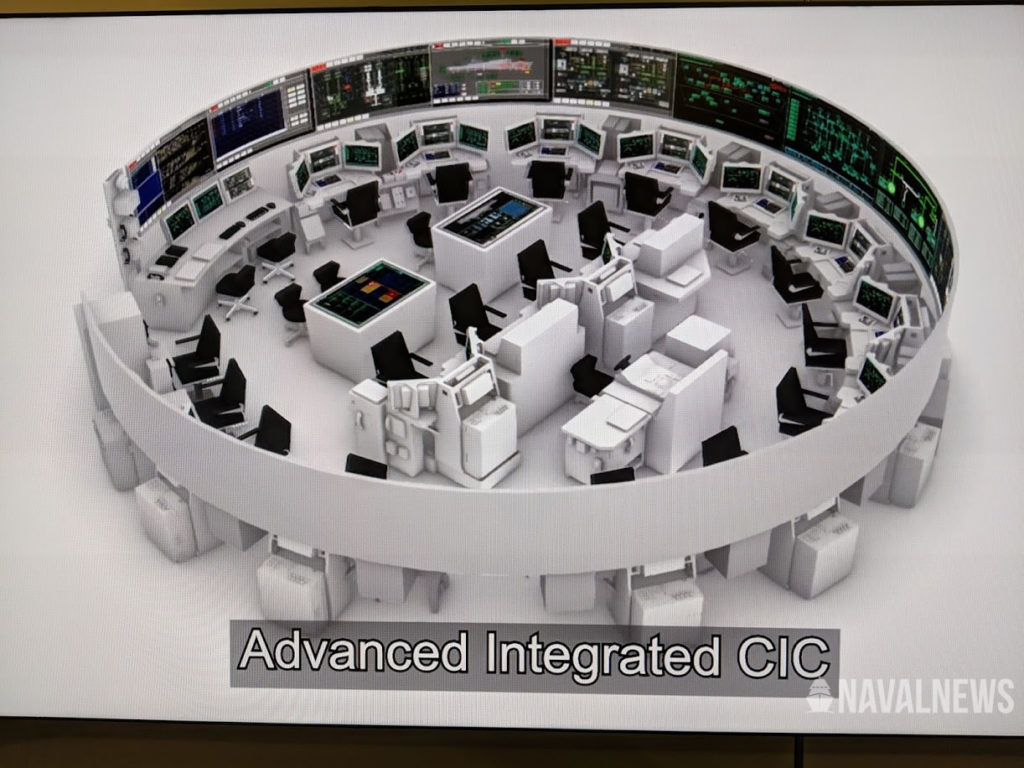 The CIC features the giant 360° wall and 14 + 4 multi function consoles + 2 large tactile tables.
The CIC features the giant 360° wall and 14 + 4 multi function consoles + 2 large tactile tables.
As we reported during SAS 2019, the 30FFM will feature a very advanced and futuristic 360° video wall in its Combat Information Center (CIC). Named the “Advanced Integrated CIC” by MHI, the CIC of the 30FFM features a circular arrangement (while every other CICs are either in square or rectangle shape) and comprises:
According to MHI, the 360° giant screen fulfills many roles. It can be used to display the direct surroundings of the frigate, fusing the feed and data from the many electro optical, infra red, video and even radar sensors onboard. The augmented reality technology will greatly help the crew in the field of navigation, asymmetric warfare and even in the phase of launch and recovery of unmanned surface vehicles.
In addition, the “video wall” can display any kind of information typically displayed on multi-function consoles. We were shown that the information from the engine control room, and typically displayed as part of the integrated platform management system (IPMS) can now be displayed in the CIC thanks to the video wall. Tasks such as engine control, damage control, fire fighting control can now take place from inside the CIC.
30FFM Missions
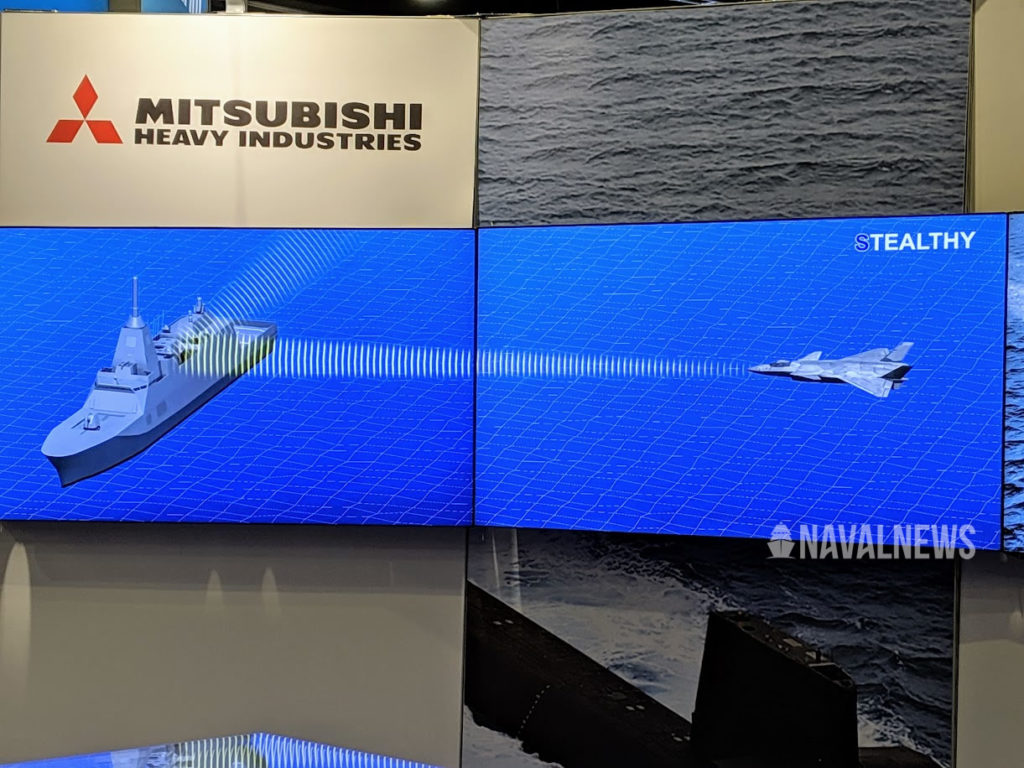 Artist impression: 30FFM evading the radar from a J-20 Mighty Dragon stealth fighter thanks to its reduced radar cross section features.
Artist impression: 30FFM evading the radar from a J-20 Mighty Dragon stealth fighter thanks to its reduced radar cross section features.
The 30 FFM will increase the current number of vessels in the JMSDF as well as replace older vessels that have been responsible for coastal defense and minesweeping. So it is designed for a very wide range of missions.
Patrol around Japan
The main mission of the 30 FFM in peacetime will be to patrol the waters around Japan. Currently, this is a mission of older destroyer (Abukuma, Hatsuyuki and Asagiri class), but the 30FFM will take over this mission by replacing these vessels.
Island Defense
As explained later, the 30FFM is equipped with Mk.45 mod.4 5-inch gun and is also given a minesweeping/mine-laying capability. Therefore, it can be inferred that the 30FFM is also useful for island defense.
The Mk.45 is ideal for attacking enemies that have landed on the island. Also, in order to land friendly troops, it is necessary to sweep the mines laid by the enemy.In addition, laying mines to deter enemy landings is also useful.
Overseas deployment
Currently, JMSDF continues to send destroyers to work with countries around the world to deter piracy off the coast of Somalia, Africa. However, this activity has become a huge burden for JMSDF, especially because of the North Korean situation and the increased duties of the JMSDF in the wake of China’s maritime expansion. Therefore, it is intended to send the 30 FFM to these international contributions overseas and to dedicate the destroyer to missions against China and North Korea.
30FFM weapons, sensors and unmanned systems
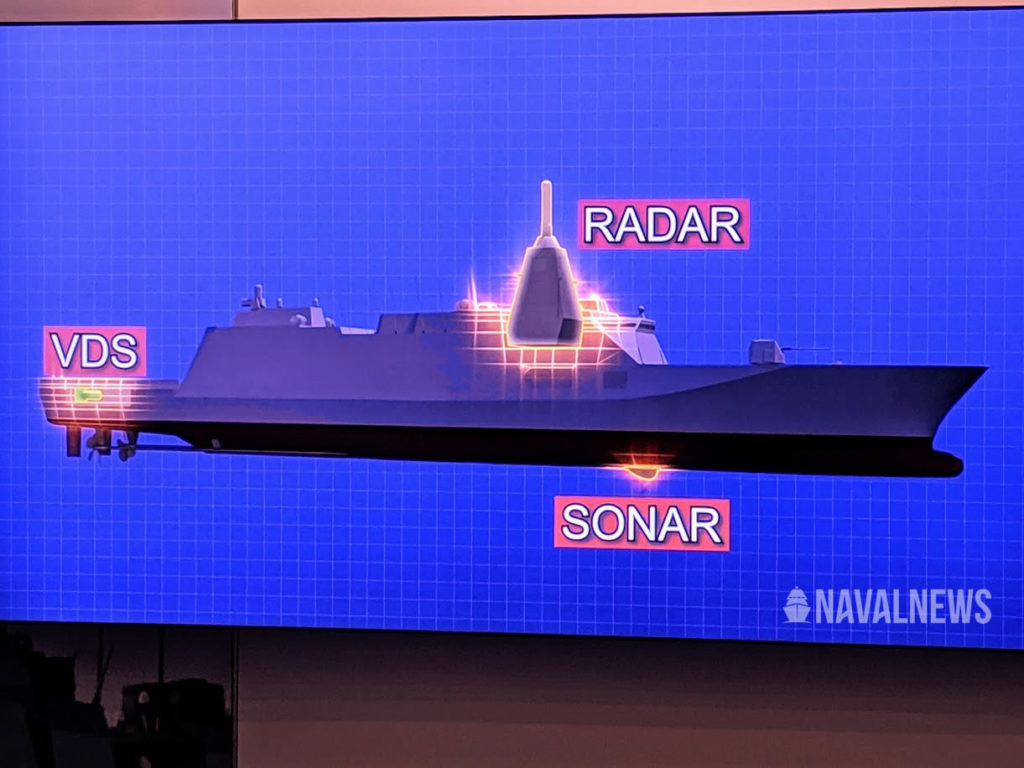 Sensor systems aboard the 30FFM
Sensor systems aboard the 30FFM
The 30FFM will be equipped with a wide variety of weapons and systems as listed below.
30FFM Timeline
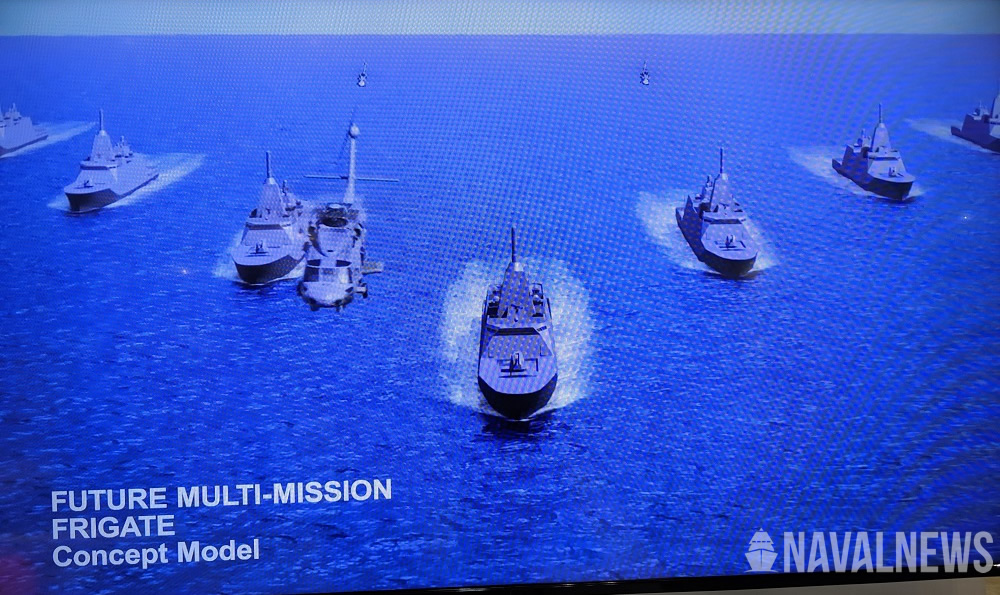 30FFM Artist impression. 30FFM will be fitted with 8x anti-ship missiles, a SeaRAM and an helicopter deck + hangar to accommodate an SH-60J helicopter.
30FFM Artist impression. 30FFM will be fitted with 8x anti-ship missiles, a SeaRAM and an helicopter deck + hangar to accommodate an SH-60J helicopter.
MHI won a contract from the Japanese MoD in August 2018 for the production of the first two frigates and MHI is today working on the detailed design of the frigate as well as production design stage. At this time, Mitsui E&S also decided to build 30FFMs as a subcontractor to MHI.MHI won a contract from the Japanese MoD in August 2018 for the production of the first two frigates and MHI is today working on the detailed design of the frigate as well as production design stage. At this time, Mitsui E&S also decided to build 30FFMs as a subcontractor to MHI.
First steel cutting of the first 30FFM took place in September 2019 at MHI Nagasaki shipyard, and second one in October 2019 at Mitsui E&STamano shipyard. Yoshioka told Naval News in January 2020 (before the COVID-19 crisis) that the launch of the first hull was set for November this year while delivery of the first frigate to the JMSDF was set for March 2022. It is not clear if these dates have move by a couple of months (as is the case with most shipbuilding projects around the world) because of the pandemic.
In addition, this ship design is the first major surface combatant that Japan (via MHI) is actively promoting for export. OPV and Destroyer variants based on 30FFM were unveiled during PACIFIC 2019 last year in Australia.
 www.navalnews.com
www.navalnews.com
Yoshihiro Inaba contributed to this story
30FFM (also known as FFM and previously known as 30DX) is the next generation multi-mission frigate designed for the Japan Maritime Self-Defense Force (JMSDF). A total number of 22 Frigates are expected to be procured for the JMSDF.
The two shipyards in charge of building the first two frigates of the class are Mitsubishi Heavy Industries (MHI) in Nagasaki and Mitsui E&S in Okayama
The first 30FFM frigate at MHI berth #2 in Nagasaki:

According to MHI, the 30FFM multi-mission frigate will have a full load displacement of about 5,500 tons, with a length of 132.5 meters and a beam of 16.3 meters. It will have a maximum speed in excess of 30 knots. The crew complement will be quite low, at about 90 sailors, indicating a high level of automation on board.
Atsui Yoshioka, Senior Project Manager of the Next Generation Surface Ship Project at MHI previously told Naval News at Sea Air Space 2019 that the main requirements that drove the design of this future ship are:
- Very low radar cross section
- Very high speed
- Reduced crew
- Ability to launch and recover unmanned systems
To achieve such as high speed (over 30 knots), the frigate will be fitted with a CODAG propulsion system consisting in a single Rolls Royce MT-30 gaz turbine and two MAN 12V28/33D diesel engines. Early designs of the frigate showed a combination of waterjet and propellers but the newer scale model (unveiled at SAS 2018 and showcased at various trade shows ever since) doesn’t show the underside of the hull anymore.
30FFM Advanced Integrated CIC

As we reported during SAS 2019, the 30FFM will feature a very advanced and futuristic 360° video wall in its Combat Information Center (CIC). Named the “Advanced Integrated CIC” by MHI, the CIC of the 30FFM features a circular arrangement (while every other CICs are either in square or rectangle shape) and comprises:
- An outer rim, with 14 multi function consoles (plus two extra seats), all facing the wall
- 3 rows at the center of the circle arrangement consisting in:
- (what looks like) a central helm station
- 4 more multi-function consoles (likely for the commanding officer and his XO)
- 2 large horizontal tactical table likely for cooperative mission planning and navigation purpose
According to MHI, the 360° giant screen fulfills many roles. It can be used to display the direct surroundings of the frigate, fusing the feed and data from the many electro optical, infra red, video and even radar sensors onboard. The augmented reality technology will greatly help the crew in the field of navigation, asymmetric warfare and even in the phase of launch and recovery of unmanned surface vehicles.
In addition, the “video wall” can display any kind of information typically displayed on multi-function consoles. We were shown that the information from the engine control room, and typically displayed as part of the integrated platform management system (IPMS) can now be displayed in the CIC thanks to the video wall. Tasks such as engine control, damage control, fire fighting control can now take place from inside the CIC.
30FFM Missions

The 30 FFM will increase the current number of vessels in the JMSDF as well as replace older vessels that have been responsible for coastal defense and minesweeping. So it is designed for a very wide range of missions.
Patrol around Japan
The main mission of the 30 FFM in peacetime will be to patrol the waters around Japan. Currently, this is a mission of older destroyer (Abukuma, Hatsuyuki and Asagiri class), but the 30FFM will take over this mission by replacing these vessels.
Island Defense
As explained later, the 30FFM is equipped with Mk.45 mod.4 5-inch gun and is also given a minesweeping/mine-laying capability. Therefore, it can be inferred that the 30FFM is also useful for island defense.
The Mk.45 is ideal for attacking enemies that have landed on the island. Also, in order to land friendly troops, it is necessary to sweep the mines laid by the enemy.In addition, laying mines to deter enemy landings is also useful.
Overseas deployment
Currently, JMSDF continues to send destroyers to work with countries around the world to deter piracy off the coast of Somalia, Africa. However, this activity has become a huge burden for JMSDF, especially because of the North Korean situation and the increased duties of the JMSDF in the wake of China’s maritime expansion. Therefore, it is intended to send the 30 FFM to these international contributions overseas and to dedicate the destroyer to missions against China and North Korea.
30FFM weapons, sensors and unmanned systems

The 30FFM will be equipped with a wide variety of weapons and systems as listed below.
- BAE Systems Mk.45 mod.4 5-inch naval gun system ×1
- Japan Steel Works 12.7mm Remote Weapon System ×2
- Mk.41 VLS (fitted for but not with)
- Raytheon SeaRAM ×1
- MHI Type 17 anti-ship missiles ×8
- Mitsubishi Electric OPY-2 multifunction Radar
- Mitsubishi Electric OAX-3EO/IR sensors
- Hitachi OQQ-11 anti-mine sonar
- NEC OQQ-25 anti-submarine sonar (VDS/TASS)
- UUV (OZZ-5 by MHI) and USV (unknown type) for mine counter measures
- Sea mines for offensive mine warfare
30FFM Timeline

MHI won a contract from the Japanese MoD in August 2018 for the production of the first two frigates and MHI is today working on the detailed design of the frigate as well as production design stage. At this time, Mitsui E&S also decided to build 30FFMs as a subcontractor to MHI.MHI won a contract from the Japanese MoD in August 2018 for the production of the first two frigates and MHI is today working on the detailed design of the frigate as well as production design stage. At this time, Mitsui E&S also decided to build 30FFMs as a subcontractor to MHI.
First steel cutting of the first 30FFM took place in September 2019 at MHI Nagasaki shipyard, and second one in October 2019 at Mitsui E&STamano shipyard. Yoshioka told Naval News in January 2020 (before the COVID-19 crisis) that the launch of the first hull was set for November this year while delivery of the first frigate to the JMSDF was set for March 2022. It is not clear if these dates have move by a couple of months (as is the case with most shipbuilding projects around the world) because of the pandemic.
In addition, this ship design is the first major surface combatant that Japan (via MHI) is actively promoting for export. OPV and Destroyer variants based on 30FFM were unveiled during PACIFIC 2019 last year in Australia.
30FFM: Japan’s Next Generation Frigate Taking Shape at Two Shipyards - Naval News
Two Future Multi-Mission Frigates (FFM or 30FFM) are starting to take shape at two shipyards in Japan. Images and videos obtained by Naval News from local shipspotters show the integrated mast has been fitted. Both hulls should be ready for launch before the end of the year.





